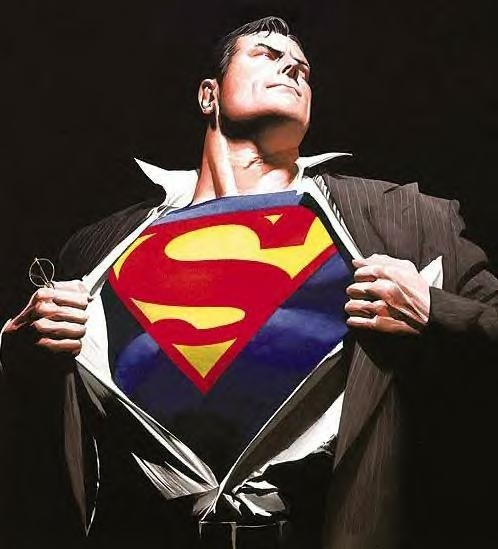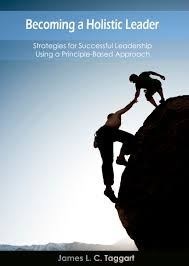Are You a Post-Heroic Leader? Examining the 10 Myths

Our perception of leadership and who should hold top positions has changed in the past two decades, albeit slowly—males still dominate boards of directors and CEO roles. Indeed, WHERE leadership resides in organizations and in communities is still being debated. My Masters thesis was on shared leadership, a subject that in the late nineties and early 2000s started to develop some legs. The practice of leadership being distributed throughout organizations still has a ways to go.
We’re still stuck on the Superman as the heroic leader image. Maybe it’s time he moves to the side.
So let’s get going. Here are the 10 myths of Post-Heroic Leadership–and why they’re wrong.
YOU decide which ones you agree with or disagree, or if any of them are not relevant to today’s volatile business environment.
1. It’s important to have everyone feel good and to avoid conflict . While this may be nice, the main goal of contemporary leadership and teamwork is to have openness. This means that vulnerability and conflict are the new conditions under which we must live.
2. Being a post-heroic leader means being soft . In reality, a post-heroic leader means being tougher in some ways than heroic, old school, managers because he must confront performance problems and conflict, even in delicate situations. The post-heroic leader must be a straight talker and align his words with his actions. Of particular note is that this leader won’t get caught in letting staff pass their issues and problems up the pipe. They must own them and deal with them.
3. Competition is discouraged among people . What’s key here is that while teams will have a healthy sense of competitiveness, they don’t let it degenerate into personal attacks or allow it to undermine one another.
4. The Post-Heroic Leader isn’t decisive. In reality, she encourages the team to solve its problems, acting in a way like a facilitator. However, she won’t hesitate to make a decision when required. The key is to get the team to play an active role in critical decision-making.
5. The Post-Heroic Leader who makes the decision is actually heroic . Not so, because the leader may, from time to time, have to make decisions dealing with urgent or even trivial issues that would waste the team’s time.
6. All decisions must be done by consensus . The effective leader uses four or more types of decision-making: autonomous, delegating, consultative, and joint (consensus). The post-heroic leader uses consensus for strategic decisions because of the need for inclusiveness. Therefore, it’s vital to understand that shared responsibility within the team does not let the leader off the hook for being accountable for the team’s performance. For the leader to say that he went along with the team is not acceptable.
7. Getting team commitment to a decision is more important than the content of the decision itself . How the team gets there is important, but so is the final product itself. The post-heroic leader pays close attention to this and ensures that a balance is struck.
8. The leader is responsible for vision . Including everyone in creating a vision produces a much richer and compelling one, compared to one that is produced by one individual.
9. Being a Post-Heroic Leader means being slow and awkward . The difference between the post-heroic leader and the heroic leader is that the latter believes in carefully planned out and conducted meetings. This includes doing the necessary lobbying beforehand, thinking through the politics of the work environment, and anticipating people’s reactions and how to respond to them.
The post-heroic leader, in contrast, believes in openness, seeing the heroic leader’s style as being a waste of time and ineffective. She aims for collaborative decision-making where people buy-in and commit. Games aren’t played behind the scenes.
10. Post Heroic Leadership is a long-term approach with respect to seeing the benefits. On the contrary, by addressing core issues the post-heroic leader contributes to almost instant productivity improvements as a result of people getting their issues heard and dealt with. Heroic leadership can also produce short-term gains, such as with layoffs, reengineering or reorganizations. However, where post-heroic leadership really shines is in the long-term because of the investment in time the leader puts up front. The long-term payoffs are big.
Do you know any Post-Heroic Leaders?
Are you one?
Take a moment to share your stories.
In the end, it is important to remember that we cannot become what we need to be, by remaining what we are.
― Max DePree (Leadership Is an Art)
___________________________________________________________________________________________________

Visit Jim’s e-Books, Resources and Services pages.
Articles from Jim Taggart
View blog
Date Line: 1994, · Forbes Magazine · THE NEW POST-HEROIC LEADERSHIP ”Ninety-five percent of American ...

The literature on inter-generational differences has been in hyper-drive for a while. Think tanks sp ...

Your faithful correspondent has been a long-time proponent of self-empowerment, writing extensively ...
Related professionals
You may be interested in these jobs
-
Plombier(ère) (31848)
Found in: Talent CA C2 - 3 days ago
STM Châteauguay, CanadaVos fonctions · Le plombier exécute des travaux d'entretien et d'installation relevant de la plomberie tels que: tuyauterie pour eau chaude ou froide, vapeur basse et haute pression, diesel, drainage, air comprimé, égout, conduite hydraulique, gaz naturel, etc. · ***Les quarts d ...
-
Agent de Prévention CNESST
Found in: Talent CA C2 - 5 days ago
Tisseur Saint-Constant, Canada PermanentÉtablie depuis de nombreuses années, Tisseur est une entreprise de construction en pleine croissance qui évolue dans les secteurs commercial, institutionnel, industriel, ouvrage d'art et excavation. Notre entreprise se démarque par son dynamisme, son professionnalisme et son expe ...
-
lifeguard
Found in: Talent CA 2 C2 - 6 days ago
Camping Les Berges du Lac Stratford, CanadaEducation: · Expérience: · Education · College/CEGEP · Work setting · Swimming pool/centre · Tasks · Ensure safety of rescuers and victims at accident scenes · Certificates, licences, memberships, and courses · Lifesaving Bronze Medallion · Lifesaving Bronze Cross · National L ...



Comments
Louise Smith
5 years ago #8
Thanks Geoff Hudson-Searle. I think I enjoy exploring other ideas like a Great Escape from psychology every day ! Seems that JC's ideas had an influence in other films like Star Wars and The Matrix Star Wars is the only "Sci Fi" I like ! Fascinating really !
Geoff Hudson-Searle
5 years ago #7
Louise Smith thanks for your notes, all agreed, I studied Campbell for many years, especially when he was called by Hollywood and Steven Spilsberg to deploy his strategy, the first film was ET, Harvard thought this methodology could be used across business and it was deployed and increased huge performance in presentations. Campbell was excellent in developing the visual journey and the emotional state journey.
Jim Taggart
5 years ago #6
Check out Angeles Arrien's "The Fourfold Way: Walking the Paths of the Warrior, Teacher, Healer, and Visionary." Amazing leadership book. My favourite. Unfortunately, Arrien, a California-based anthropologist and leadership practitioner and author, died of walking pneumonia a few years.
Jim Taggart
5 years ago #5
Thanks Geoff.
Louise Smith
5 years ago #4
Louise Smith
5 years ago #3
Louise Smith
5 years ago #2
Geoff Hudson-Searle
5 years ago #1